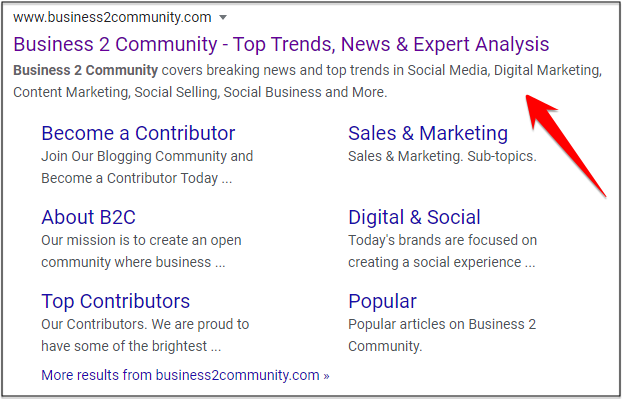When doing SEO, you’re probably aware of optimizing your website for keywords. Have you thought about optimizing the meta descriptions for your website? Do you know how they impact SEO?
Meta descriptions provide short summaries of websites and pages to readers. They give people an idea of what to expect from a website, and if you use them properly, you can get more clicks and conversions too.
Let’s take a closer look at how to write great meta descriptions for SEO and get more clicks for your website.
What is a Meta Description?
The meta description is a short piece of text that describes your web page. It’s an HTML attribute that is used by search engines to find out more about your website. Search engines tend to display your meta descriptions (and tags) on search engine result pages (SERPs) under your meta title and URL.
(Note: They don’t always display the meta description, but since Google doesn’t explain how they decide whether to show it or not, we’ll go with the assumption that all things being equal, they’ll show the meta description.)

Search engines have started displaying meta descriptions in SERPs too, making them a valuable asset to your website for SEO.
Why Meta Descriptions Are Essential for SEO
In the past, meta descriptions used to be a big part of Google’s search algorithm, but they removed it from the algorithm nearly a decade ago. So many websites stopped writing and including them.
But that’s a big mistake. Sites without meta descriptions are missing out on the extra clicks they might get from them. Why does that matter? Well, because click-through rates (CTRs) are a ranking signal for Google. So you’re missing out on an easy way to generate clicks and take advantage of that ranking signal. Otherwise, Google just presents the first sentence from the post or web page, which isn’t always the best showcase for your site.
Writing a good meta description takes some practice, so here are a few tips for writing fantastic meta descriptions that’ll encourage clicks to your website.
How to Write Irresistible Meta Descriptions
Start with these tips to write irresistible meta descriptions for your website. You’ll have to experiment and assess your results to find what works best for your site, but these will lay a good foundation for any meta description you write.
Write Casually
Remember, you’re writing meta descriptions for people, not search engines. So, keep them conversational and casual. Use natural language so everyone can understand you.
Give Readers a Clear Benefit
Your meta description should give people a clear benefit to clicking through and reading your content. This is your chance to persuade them about what you have to offer, which is informative, valuable content.
Use Power Words
Copywriters and marketers know all about power words. These are words that compel you to click, buy, or share content through psychology. It’s a linguistic way of gaining an edge on your competitors.
To do that, use words that convey emotion, but most importantly, give people a reason to click on your link.
Skip the Symbols and Other Special Characters
Ampersands, em-dashes, and other special characters might look great on-screen or even be grammatically correct, but search engines struggle to read them properly. These characters are rendered differently for a variety of reasons (mainly technology-based) or are even omitted entirely, so avoid them and stick to writing quality descriptions that are easily understood.
Bonus reason for skipping the non-alphanumeric characters: Assistive technology will be able to read your meta descriptions more easily and efficiently in SERPs, opening your website to an audience that faces more barriers to the Internet than most.
Provide a Call-to-Action (CTA)
A CTA is a phrase or word that persuades people to take action after reading your meta description. It can be as simple as “keep reading,” or more engaging as “buy now,” “create your account today”, or “sign up.”
Create Unique Descriptions for Each Page
Having the same description for multiple pages on your site isn’t a good signal to search engines or your potential audience. Write unique descriptions for each page or blog post so people can find precisely what they’re looking for.
Stick to 155-160 Characters
Ideally, you should keep your meta descriptions between 50-160 characters in length, including spaces. That’s because most search engines truncate meta descriptions longer than that, so you want to make sure you get all of it within that range. The sweet spot seems to be between 155-160 characters, though it will depend on your content.
Your primary goal with your meta description is to provide value and drive clicks, so make it as long as it needs to do that. If you’re using an SEO plugin on your WordPress website, you’ll be able to see how long yours is and edit it accordingly.
Now you know the importance of meta descriptions, how they impact your SEO, and how to write irresistible meta descriptions for your website. Use these tips for every new page you add to your site, but also when you update or revise anything. It’s another easy way to increase your website SEO and climb the SERP rankings while providing more value to your readers.
Digital & Social Articles on Business 2 Community
(66)
Report Post





